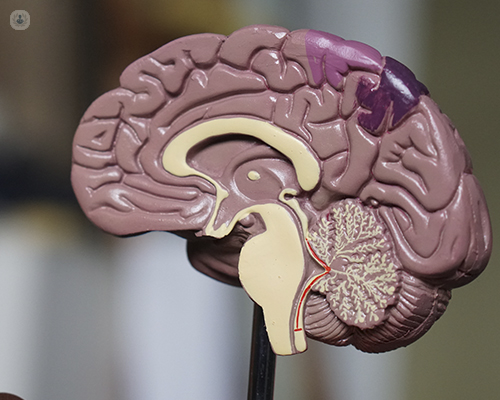Drug-resistant epilepsy (DRE)
Autore:Drug-resistant epilepsy (DRE), also referred to as refractory epilepsy or pharmacoresistant epilepsy, is the resistance to medication that prevents seizures. Epilepsy treatment is very effective overall, but about 30% of epilepsy sufferers are resistant to drugs. Professor Matthew Walker, a neurologist and pioneer in the research of epilepsy, provides an understanding of why some people have DRE and what their next treatment options are.

What exactly does it mean to be resistant to epilepsy medication?
When a patient is described as responding to epilepsy medication, it means that they become free from seizures. Treatment for seizures is very successful and most people with epilepsy (about 60-70%) will respond to the first two types of medication that they’re given. Sometimes, patients don’t initially respond well to treatment, but this is usually due to the doses not being the right amount for them.
However, there is a remaining 30-40% of patients who don’t respond to their first few medications despite trying different doses. They continue to have seizures and, in this case, a neurologist may still continue to try other medications, but the chances of becoming seizure-free drop to between 10-20% with further changes of epilepsy drugs.
How does resistance to medication happen? Why don’t the drugs work?
Although we have several theories about why epilepsy drugs sometimes don’t work, we can’t be absolutely certain. Currently, there are three main theories as to why antiepileptic drugs sometimes don’t work (or even stop working):
1. Epilepsy drugs are designed to target particular brain receptors, yet sometimes these receptors alter to become resistant. This is the same concept as bacteria in the body becoming resistant to antibiotics.
2. In every human, the brain tries to protect itself against various toxins by pumping them out of the brain. These pumps are increased in people with epilepsy and can be further increased by people on antiepileptic drugs. As a result, the brain may pump the medication away from the brain and consequently from where the medication needs to reach in order to act.
3. The severity of someone’s epilepsy may be so strong that the drugs are unable to control the seizure-causing parts of the brain.
Additionally, it’s probable that a patient’s resistance to epilepsy drugs is due to a combination of these, not just one.
If medication is not working, what’s next?
Depending on the type of epilepsy the patient has, and if the patient is suitable for it, surgery is by far the most successful method for treating drug-resistant epilepsy. Surgery is only a possibility in those who have a well-defined abnormality or area generating seizures in the brain.
If you’re a patient with an affected area of the brain that can safely be removed, then we may consider doing that even though you’re resistant to only two drugs. This is because the chance of becoming seizure-free via surgery can be over 70%, compared to a 10-20% chance of becoming seizure-free from continuing to try other medications.
Unfortunately, about 90% of people with drug-resistant epilepsy are not suitable for surgery. This can be because:
- The seizures start from many places in the brain and so removing one area will not be successful.
- The affected region in the brain is vital for language, vision, speech or memory, and therefore too important to remove.
What about the 90% of people with drug-resistant epilepsy who can’t have surgery?
For the 90% of people with drug-resistant epilepsy who can’t have surgery, they can continue trying other drugs in the hope that they will respond to another change of medication. There is a 10-20% chance that they will respond well to further medication and become seizure-free.
However, for those who don’t respond to six or seven medications, the chance of becoming seizure-free with further changes to medication drops to less than 5%. In these cases, other therapies can be attempted.
What’s the next option after medication and surgery?
Stimulation therapy
Stimulation therapy can help to improve seizures by lessening their severity and frequency. The two main types are vagus nerve stimulation (VNS) and deep brain stimulation (DBS). They consist of using a device to stimulate targeted nerves or parts of the brain.
It’s important to note that at the moment both of these stimulation therapies are palliative, meaning that they help to improve the seizures but rarely stop them.
Dietary treatments (for children)
In children with very severe epilepsy, there’s a specific diet called the ketogenic diet. This diet is high fat and low carb, and it produces ketones such as acetone. Such a diet has been shown to be effective in children with very severe epilepsy – the problem is that it’s a very strict diet and is poorly tolerated in adults.
Treating other conditions
Surrounding the main condition of epilepsy are other conditions that are associated with it, particularly in drug-resistant epilepsy, such as depression. When we consider how to treat someone with drug-resistant epilepsy, we also look at treating these other conditions too.
Visit Professor Matthew’s Top Doctor’s profile to learn more about his expertise and to book a consultation.


